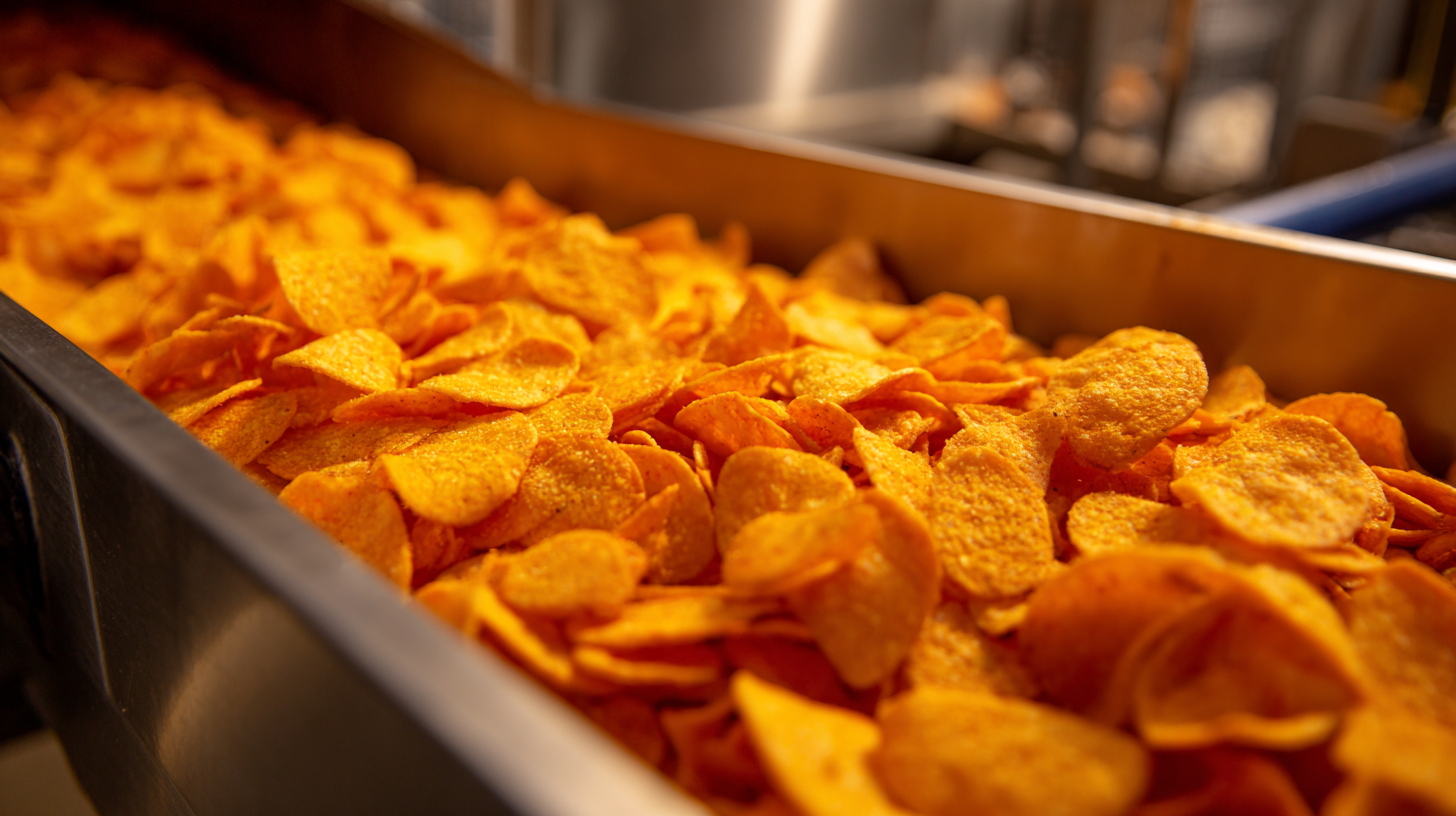
In today's fast-paced food industry, efficiency and quality are paramount, particularly in the production of popular snacks like finger chips. The advent of the Finger Chips Cutter Machine has revolutionized this sector, seamlessly integrating advanced technology into traditional food processing methods. As the demand for snacks continues to surge, producers are faced with the challenge of meeting high consumer expectations while maintaining optimal production speeds. The Finger Chips Cutter Machine addresses these needs by ensuring consistent slice thickness, reducing preparation time, and minimizing waste, all while enhancing the final product's quality. This innovation not only streamlines the manufacturing process but also elevates the overall snack experience, making it a pivotal player in modern culinary practices. As we delve into the impact of this groundbreaking machine, we will explore its contributions to efficiency and quality, and how it is shaping the future of snack production.

When it comes to producing high-quality finger chips, selecting the right cutter machine is essential for maximizing efficiency and output. According to a report by Market Research Future, the global snack food market is projected to reach USD 200 billion by 2027, and the demand for uniform, quality finger chips will significantly influence production capabilities. A well-chosen finger chips cutter machine not only increases the quantity produced but also ensures consistent sizing, which is crucial for even cooking and customer satisfaction.
Different models and specifications cater to various production needs. For instance, those aiming for small to medium-scale production may consider semi-automatic machines, which can deliver up to 500 kg of finger chips per hour with minimal operator intervention. On the other hand, larger manufacturers should look into fully automated systems that can handle over 1000 kg per hour while maintaining precision cuts. According to industry data, investing in advanced cutting technology can reduce waste by up to 15%, making a significant impact on the bottom line. Therefore, evaluating machine capabilities in accordance with production goals is vital for optimizing both efficiency and quality in the competitive snack food industry.

In the rapidly evolving landscape of snack production, automation has become a crucial element in enhancing both efficiency and quality. The integration of advanced technologies, such as robotic systems and automated machinery, significantly streamlines processes, particularly in packaging and production. By reducing manual labor and minimizing human error, companies can produce snacks at a faster pace while maintaining consistent quality standards. Recent developments in food robotics demonstrate the industry's shift towards smarter automation, enabling manufacturers to optimize operations and meet the heightened consumer demand for convenience and variety.
Furthermore, the benefits of automation extend beyond mere production speed; they encompass improved supply chain management and reduced operational costs. The establishment of regional distribution centers allows for more effective logistics, showcasing how automation in these facilities enhances product availability and diminishes transportation time. As food production systems become increasingly sophisticated, businesses face the imperative of adopting these technologies to stay competitive. In essence, automation is not just a trend but a transformative force reshaping the snack industry, promising a future marked by enhanced productivity and remarkable product quality.
The advancement of finger chips cutter machines has significantly transformed the food processing industry, particularly in enhancing the quality of snack products. These machines utilize advanced cutting techniques that ensure uniformity in size and shape, which is crucial for achieving consistent cooking and flavor. By minimizing irregularities, these machines not only improve the visual appeal of finger chips but also enhance their crispiness and overall texture.

Moreover, the precision offered by modern cutting technology reduces waste and maximizes the yield of every batch. This efficiency translates to better cost management for manufacturers, enabling them to produce higher volumes of quality finger chips without compromising on taste. As a result, consumers benefit from a superior product, while producers can leverage improved operational processes to stay competitive in a dynamic market. Ultimately, the integration of advanced cutting techniques through finger chips cutter machines represents a pivotal shift towards higher quality standards in snack production.
The modern food industry thrives on efficiency, and the advent of finger chips cutter machines has transformed snack production workflows. These innovative cutter designs streamline the entire process, reducing labor costs while significantly increasing throughput. By minimizing the time spent on slicing and shaping, manufacturers can produce a higher volume of finger chips without compromising quality. The precision of these machines ensures uniformity in size and thickness, enhancing the overall appeal and cooking consistency of the final product.
Moreover, efficient cutter designs contribute to a seamless integration into existing production lines. With adjustable settings, operators can easily switch between different types of snacks, catering to varying consumer demands. This flexibility allows manufacturers to respond quickly to market trends without the need for extensive downtime or reconfiguration. As a result, businesses can maintain a competitive edge, ensuring they meet consumer expectations for both taste and texture while maximizing production efficiency.
Proper maintenance and troubleshooting of finger chips cutter machines are essential to ensure consistent production quality and operational efficiency. Regular inspections should be conducted to identify any wear and tear on the blades and other components. It is important to keep the machine clean and free of debris to prevent contamination and ensure the chips meet hygiene standards. Additionally, operators should familiarize themselves with the manufacturer's guidelines regarding maintenance schedules and recommended cleaning procedures.
In case of operational issues, such as uneven cuts or machine jams, prompt troubleshooting should be undertaken. Operators should check for any obstructions in the feed system and ensure that the blades are aligned correctly. If the machine is producing chips of inconsistent size, recalibrating the cutting settings may be necessary. Keeping a log of maintenance activities and any issues encountered can also help in diagnosing future problems, allowing for a more efficient resolution and minimizing downtime. By prioritizing regular upkeep and being proactive about troubleshooting, manufacturers can maximize the performance and lifespan of their finger chips cutter machines.
| Feature | Description | Efficiency Impact | Maintenance Tips | Common Issues |
|---|---|---|---|---|
| Automation Features | Advanced cutting technology that reduces manual labor. | Increases production speed by up to 50%. | Regularly check and replace blades. | Blades dulling over time. |
| Quality Control | Ensures uniform size and thickness of finger chips. | Reduces waste and improves product consistency. | Clean machine parts regularly for optimal performance. | Inconsistent chip size due to worn parts. |
| Safety Features | Emergency stops and safety guards to protect operators. | Minimizes risk of accidents, ensuring a safer work environment. | Test safety features regularly to ensure functionality. | Malfunctioning emergency stop button. |
| Energy Efficiency | Low energy consumption compared to traditional methods. | Can reduce energy costs by approximately 30%. | Schedule regular energy audits. | Power outages affecting operations. |





